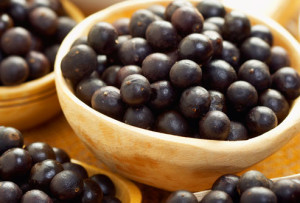Acai is a Portuguese name for a kind of palm tree that is Indigenous to Important and South America. It commonly grows in Brazil and Peru, in swampy areas and floodplains. Scientifically the place is referred to as Euterpe oleracea. The Portuguese name means a plant that cries or expels water. In the latest times, the plant has become very famed especially for its fruit; which is small, round and black-purple in color. This acai fruit is used by the natives in the Brazilian Amazon as food. It is also served as a pulp and a beverage.
Globally, the curiosity in acai has been mainly because of its dietary content material, anti-oxidant skills and of course the use as a weight loss option. The dietary written content of the fruit is made up of proteins, carbohydrates, fat, dietary fiber, nutritional vitamins and low sugar value amongst others. In the market, the acai is sold as a dietary supplement, with celebrities like Oprah Winfrey promoting it through Dr. Oz. Acai is just one of the antioxidant foods in AIO – Premium Cellular Health
Acai is believed to have antioxidant qualities. Some research have shown that it has polyphenol and anti-oxidant anthocyanins, some nutritional vitamins, amino acids, enzymes, phytochemicals and minerals. These de-oxidizings are believed to have disorder-prevention skills, thus supporting the immune system of individuals who take this antioxidant food. It has flavanoids that are responsible for countering diseases such as heart sicknesss. Extracts of acai are believed to have an impact against peroxyl, peroxynitrite and hydroxyl radicals. Scientists have shown a link between damage of the free radicals and chronic disorders such as cancer, rheumatoid arthritis, cataracts, Alzheimer’s ailment amongst others.
The dense dietary valu e of the acai is also shown to suppress one’s appetite, hence the use as a weight loss option. It helps the libido, reduces inflammation and is believed to enhance stamina and power as well as delay getting older
e of the acai is also shown to suppress one’s appetite, hence the use as a weight loss option. It helps the libido, reduces inflammation and is believed to enhance stamina and power as well as delay getting older